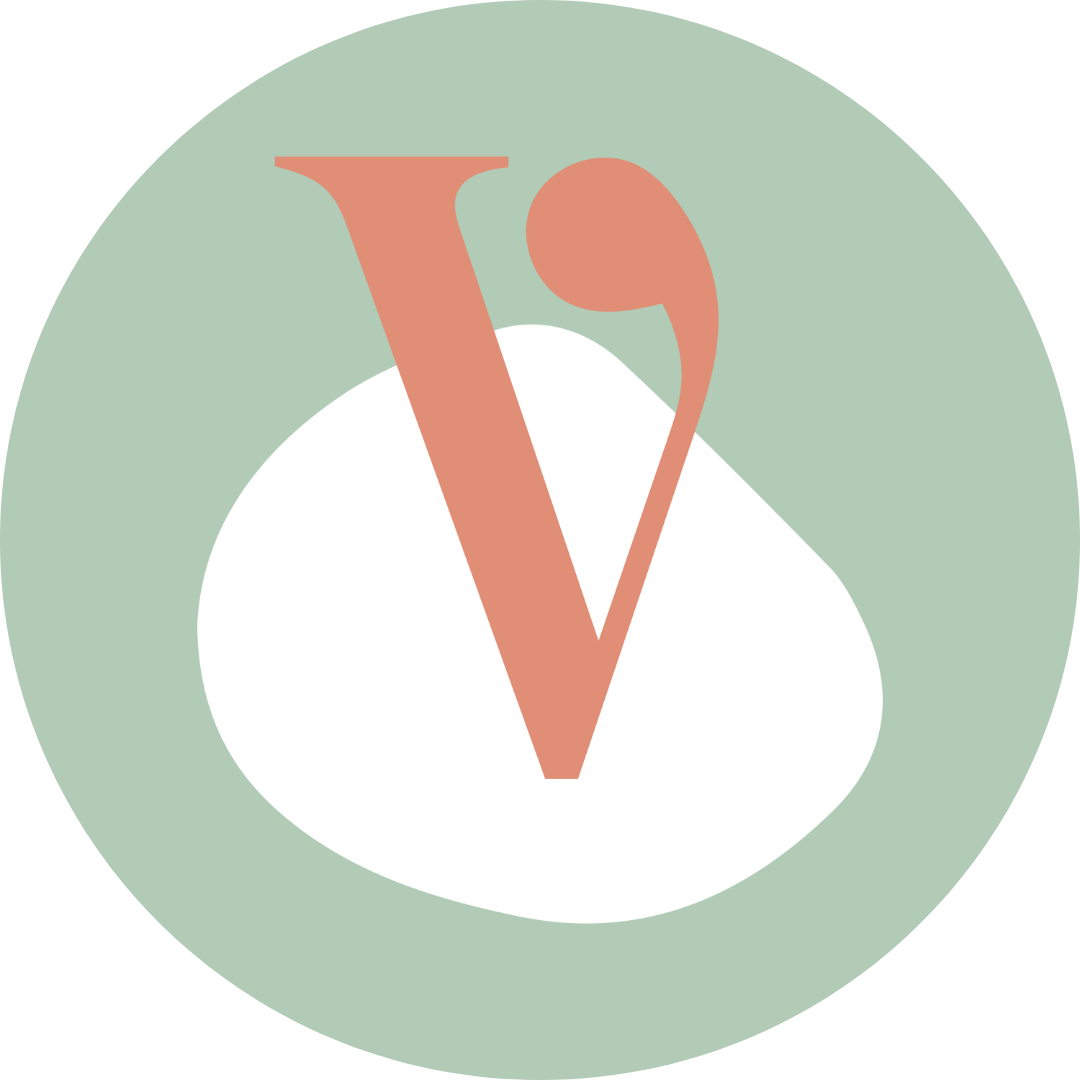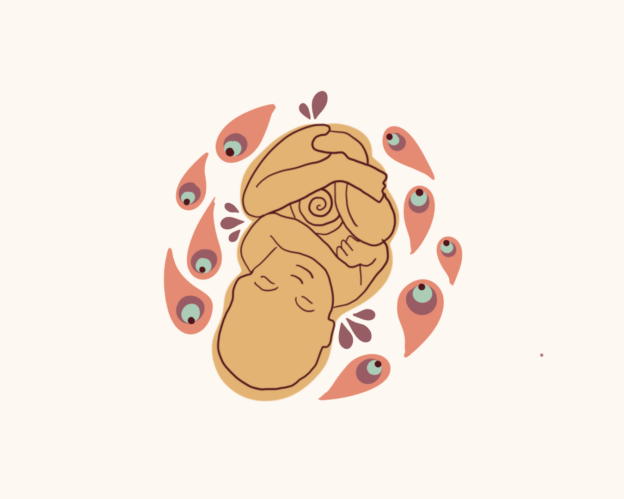Geschreven door Sanne Drost-Goossens
Gepubliceerd op 14 juli 2023
| Schrik niet; dit artikel duikt diep in de inhoud en is daarom op sommige stukken best lastig te volgen. Medische termen zijn onderstreept en staan uitgelegd. En lees het artikel vooral samen met je zorgverlener. |
Alle pasgeborenen worden enkele dagen na de geboorte in meerdere of mindere mate geel, alhoewel dit bij een donkerdere huidskleur moeilijker te zien is. Dit wordt icterus genoemd (in de volksmond: geelzucht). De gele kleur wordt veroorzaakt door hyperbilirubinemie: een opstapeling van bilirubine (een afbraakproduct van hemoglobine). De gele kleur wordt zichtbaar in de huid van de baby, maar ook het oogwit of de slijmvliezen kunnen een gelige kleur krijgen.
In de basis is de gele kleur een normaal fysiologisch verschijnsel, heeft dit geen gevolgen en gaat het ook vanzelf weer over. In sommige gevallen wordt de hoeveelheid bilirubine zo hoog dat dit bij de hersenen terecht komt en daar schade kan aanrichten. Met het oog is niet goed te bepalen wanneer een pasgeborene té geel ziet. Daarom zijn er diverse testen mogelijk om te bepalen of de hoeveelheid bilirubine nog zonder risico’s is. In dit artikel wordt ingegaan hoe hyperbilirubinemie ontstaat, wanneer het een probleem is, welke verschillende testen gedaan kunnen worden en wat de behandelmogelijkheden zijn.
Op BabyZietGeel.nl kan je ook veel informatie vinden over dit onderwerp.
AAP. (2004). Management of hyperbilirubinemia in the newborn infant 35 or more weeks of gestation. Pediatrics, 114(1), 297-316. Afanetti, M., Eleni Dit Trolli, S., Yousef, N., Jrad, I., & Mokhtari, M. (2014). Transcutaneous bilirubinometry is not influenced by term or skin color in neonates. Early Human Development, 90, 417-420. Armanian, A., Jahanfar, S., Feizi, A., Salehimehr, N., Molaeinezhad, M., & Sadeghi, E. (2019, 8). Prebiotics for the prevention of hyperbilirubinaemia in neonates. The Cochrane Database of Systematic Reviews, CD012731. Bahr, T., Henry, E., Christensen, R., Minton, S., & Bhutani, V. (2021, 9). A New Hour-Specific Serum Bilirubin Nomogram for Neonates > 35 Weeks of Gestation. The journal of pediatrics, 236, 28-33. Basiri-Moghadam, M., Basiri-Moghadam, K., Kianmehr, M., & Jani, S. (2015, 6). The effect of massage on neonatal jaundice in stable preterm newborn infants: a randomized controlled trial. The Journal of Pakistan Medical Association, 65(6), 602-606. Beentjes, M., Weersma, R., Koch, W., Offringa, A., Verduijn, M., Mensink, P., . . . van Asselt, K. (2012, 3). Zwangerschap en kraamperiode. Nederlands Huisartsen Genootschap. Bergman, K., de Vries, J., Hulzebos, C., Vreugdenhil, E., Erwich, J., & Dijk, P. (2019, 3). Eén jaar perinatale audit hyperbilirubinemie in Noord-Nederland. Nederlands Tijdschrift voor Obstetrie & Gynaecologie, pp. 83-86. Bhutani, V., Johnson, L., & Sivieri, E. (1999, 1). Predictive ability of a predischarge hour-specific serum bilirubin for subsequent significant hyperbilirubinemia in healthy term and near-term newborns. Pediatrics, 103(1), 6-14. Calder, A., Ounsted, M., Moar, V., & Turnbull, A. (1974). Increased bilirubin levels in neonates after induction of labour by intravenous prostaglandin E2 or oxytocin. Lancet, 2(7893), 1339-1342. Eggert, L., Wiedmeier, S., Wilson, J., & Christensen, R. (2006, 5). The effect of instituting a prehospital-discharge newborn bilirubin screening program in 18-hospital health system. Pediatrics, 117(5), e855-862. Ercan, S., & Özgün, G. (2018, 5). The accuracy of transcutaneous bilirubinometer measurements to identify the hyperbilirubinemia in outpatient newborn population. Clinical biochemistry, 55, 69-74. Gholitabar, M., McGuire, H., & Rennie, J. (n.d.). Clofibrate in combination with phototherapy for unconjugated neonatal hyperbilirubinaemia. Gotink, M., Benders, M., Lavrijsen, S., Rodrigues Pereira, R., Hulzebos, C., & Dijk, P. (2013, 7 24). Severe neonatal hyperbilirubinemia in the Netherlands. Neonatology(2), pp. 137-142. Granat, M., Borochowitz, Z., Berger, A., & Sharf, M. (1981). Bilirubin and protein concentration in cord blood after spontaneous versus induced labor. Correlation to neonatal hyperbilirubinemia. Journal of Perinatal Medicine, 9(1), 27-34. Hankes Drielsma, I. (2008). Neonatologie - Bloed. In P. Kunkeler, M. van Doorn, & R. Göbel, Obstetrie en gynaecologie verpleekgunde - Obstetrie (pp. 281-287). Maarsen: Elsevier gezondheidszorg. Ho, S., Lin, Y., & Chen, C. (2021, 9). The impact of phototherapy on the accuracy of transcutaneous bilirubin measurements in neonates: optimal measurement site and timing. Diagnostics, 11(9), 1729. Honar, N., Ghashghaei Saadi, E., & Saki, F. (2016). Effect of ursodeoxycholic acid on indirect hyperbilirubinemia in neonates treated with phototherapy. Pediatrics Gastroeneterol Nutr, pp. 97-100. Horn, D., Ehret, D., Gautham, K., & Soll, R. (2021, 7). Sunlight for the prevention and treatment of hyperbilirubinemia in term and late preterm neonates. Cochrane Database Systematic Reviews. Hulzebos, C., Vitek, L., Coda Zabetta, C., Dvorak, A., Schenk, P., van der Hagen, E., . . . Tiribelli, C. (2021, 8). Screening methods for neonatal hyperbilirubinemia: benefits, limitations, requirements, and novel developments. Pediatric Research, 90(2), 272-276. Ip, S., Chung, M., Kulig, J., O'Brien, R., Sege, R., Glicken, S., . . . Lau, J. (2004, 7). An evidence-based review of important issues concerning neonatal hyperbilirubinemia. Pediatrics, 114(1), e130-153. Isa, H., AlBuainain, N., Bunajem, F., Masood, A., & Bucheery, Y. (2022, 9). Neonatal and Maternal Risk Factors for Indirect Hyperbilirubinemia: a cross-sectional study from Bahrain. International Journal of Pediatrics(5199423). Jnah, A., Newberry, D., & Eisenbeisz, E. (2018). Comparison of transcutaneous and serum bilirubin measurements in neonates 30 to 34 weeks' gestation before, during and after phototherapy. Advances in Neonatal Care, 18, 144-153. Kaplan, M., Schors, I., Algur, N., Bromiker, R., Schimmel, M., & Hammerman, C. (2008, 6). Visual screening versus transcutaneous bilirubinometry for predischarge jaundice assessment. Acta paediatrica, 97(6), 759-763. Kemper, A., Newman, T., Slaughter, J., Maisels, M., Watchko, J., Downs, S., . . . Russell, T. (2022, 9). Clinical Practice Guideline Revision: Management of Hyperbilirubinemia in the Newborn Infant 35 or More Weeks of Gestation. American Academy of Pediatrics, 150(3), e2022058859. Keren, R., Bhutani, V., Luan, X., Nihtianova, S., Cnaan, A., & Schwartz, J. (2005, 4). Identifying newborns at risk of significant hyperbilirubinaemia: a comparison of two recommended approaches. Archives of disease in childhood, 90(4), 415-421. Lai, N., Kamar, A., Choo, Y., Kong, J., & Ngim, C. (2017). Fluid supplementation for neonatal unconjugated hyperbilirubinaemia. the Cochrance Database of Systematic Reviews, CD011891. Lin, C., Yang, H., Cheng, C., & Yen, C. (2015). Effects of infant massage on jaundiced neonates undergoing phototherapy. Italian journal of pediatrics, 94. Maya-Enero, S., Candel-Pau, J., Garcia-Garcia, J., Duran-Jorda, X., & Lopez-Vilchez, M. (2021, 2). Reliability of transcutaneous bilirubin determination based on skin color determined by a neonatal skin color scale of our own. European Journal of Pediatricsc, 180(2), 607-616. Mitra, S., & Rennie, J. (2017). Neonatal jaundice: aetiology, diagnosis and treatment. British Journal of Hospital Medicine(12), pp. 199-704. Nagar, G., Vandermeer, B., Campbell, S., & Kumar, M. (2013, 11). Reliability of Transcutaneous Bilirubin Devices in Preterm Infants: a Systematic Review. Pediatrics, 132(5), 871-818. National Institue for Health and Care Excellence. (2016, 10). Jaundice in newborn babies under 28 days. Clinical guideline. Retrieved 1 2023, from NICE: https://www.nice.org.uk/guidance/cg98/resources/jaundice-in-newborn-babies-under-28-days-pdf-975756073669#:~:text=Approximately%2060%25%20of%20term%20and,jaundice')%20is%20usually%20harmless. Nederlandse Vereniging voor Kindergeneeskunde. (2023). Richtlijn Hyperbilirubinemie bij de pasgeborene (>35 weken). Retrieved from https://richtlijnendatabase.nl/richtlijn/hyperbilirubinemie_bij_pasgeborenen_geboren_na_35_weken/startpagina_-_hyperbilirubinemie.html Pace, E., Brown, C., & DeGeorge, K. (2019, 2). Neonatal hyperbilirubiinemia: An evidence-based approach. The Journal of Family Practice, pp. E4-E11. Riskin, A., Tamir, A., Kugelman, A., Hemo, M., & Bader, D. (2008, 6). Is visual assessment of jaundice reliable as a screening tool to detect significant neonatal hyperbilirubinemia? The Journal of Pediatrics, 152(6), 782-787. Sahin, H., Kolusari, A., Kamaci, M., Kaynak, C., & Tuncel, H. (2010). The effect of oxytocin infusion and misoprostol on neonatal bilirubin levels. Achrcives of Gynaecology and Obstetrics, 281(1), 11-14. Semmekrot, B., de Vries, M., Gerrits, G., & van Wieringen, P. (2004, 10 13). Optimale borstvoeding ter preventie van hyperbilirubinemie bij gezonde, voldragen pasgeborenen. Nederlands Tijdschrift voor Geneeskunde. Semmekrot, B., de Vries, M., Gerrits, G., & van Wieringen, P. (2004). Optimale borstvoeding ter preventie van hyperbilirubinemie bij gezonde, voldragen pasgeborenen. Nederlands Tijdschrift voor Geneeskunde, 148, 2016-2019. Shahbazi, M., Khazaei, S., Moslehi, S., & Shahbazi, F. (2022, 3). Effect of massage therapy for the treatment of neonatal jaundice: a systematic review and dose-response meta-analysis. International journal of pediatrics, 9161074. Shinwell, E., Sciaky, Y., & Karplus, M. (2002). Effect of position changing on bilirubin levels during phototherapy. Journal of Perinatology, 22(3), 226-229. Suresh, G., Martin, C., & Soll, R. (2003). Metalloporphyrins for treatment of unconjugated hyperbilirubinemia in neonates. US Preventive Services Task Force. (2009). Screening of infants for hyperbilirubinemia to prevent chronic bilirubin encephalopathy: US Preventive Services Task Force recommendation statement. Pediatrics, 124, 1172-1177. van den Akker, E., de Beer, J., Dijk, P., Fetter, W., Flikweert, S., Govaert, P., . . . Vade. (2008). Richtlijn preventie, diagnostiek en behandeling van hyperbilirubinemie bij de pasgeborene, geboren na een zwangerschapsduur van meer dan 35 weken. Retrieved from Nederlandse Vereniging voor Kindergeneeskunde: https://www.knov.nl/serve/file/knov.nl/knov_downloads/828/file/Richtlijn%20Hyperbilirubinaemie.pdf Vreman, H., Wong, R., & Stevenson, D. (2004, 10). Phototherapy: current methods and future directions. Seminars Perinatology, 28(5), 326-333. Woyon, J., Agrawal, P., & Zimmer, M. (1994). Evaluation of the effect of oxytocin use for labor induction on frequency of occurrence and severity of neonatal jaundice. Ginekologia Polska, 65(12), 682-685. Ying, Q., You, X., You, J., & Wang, J. (2020, 11). The accuracy of transcutaneous bilirubin to identify hyperbilirubinemia in jaundiced neonates. The Journal of Maternal-Fetal & Neonatal Medicine, 35(22), 4318-4325.
>




Reacties